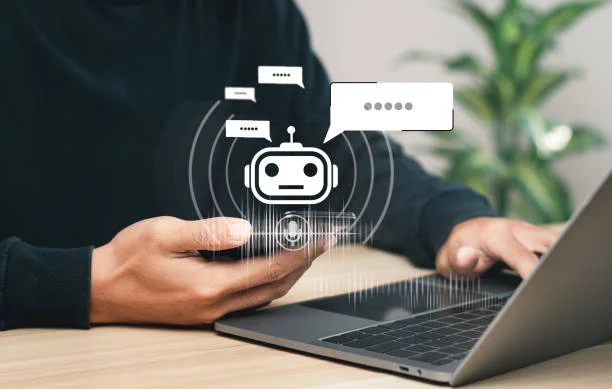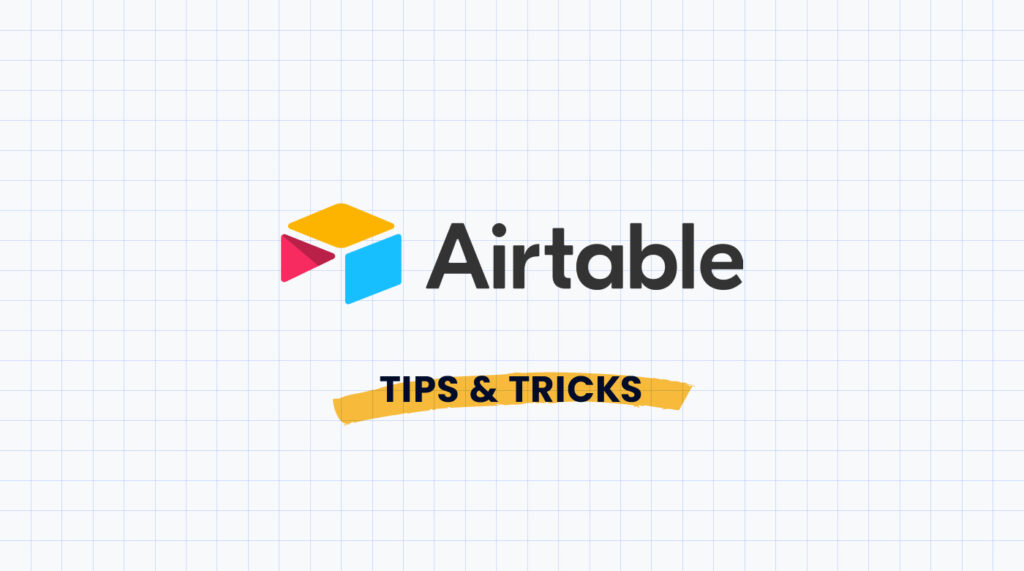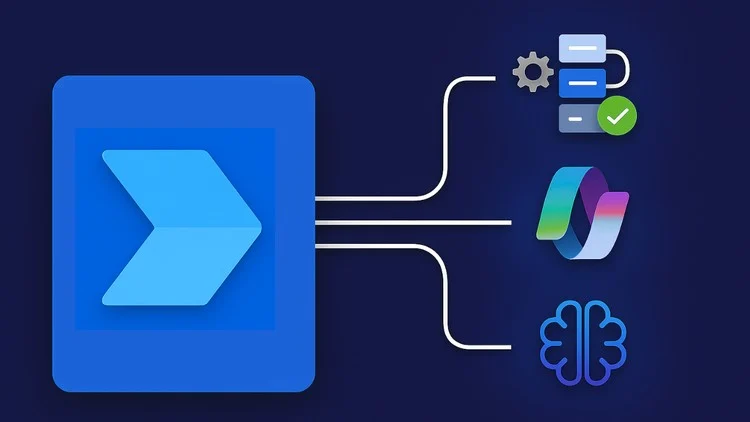Generative AI is transforming the way Minimum Viable Products (MVPs) are developed, but it is not fully replacing MVP developers. While AI automates routine tasks such as coding and content creation, it cannot substitute the creativity, judgement, and strategic decision-making that human developers provide.
Startups and product teams increasingly rely on AI to speed up prototyping and reduce development cycles, allowing faster MVP launches and cost savings. However, the collaboration between AI tools and developers remains essential for building quality products that meet real user needs.
The evolving role of generative AI enhances productivity and efficiency, but the core expertise and innovation come from skilled developers guiding the process.
Understanding Generative AI in MVP Development

Generative AI reshapes the way minimum viable products (MVPs) are created by automating coding, design, and testing processes. It accelerates development cycles and reduces manual effort, impacting the traditional role of MVP developers. The underlying technologies have matured to enable efficient and scalable AI-driven product development.
Defining Generative AI and MVP Developers
Generative AI refers to systems capable of producing content such as code, text, or designs based on input data. It uses advanced models like large language models to create functional components without explicit human programming for every task.
MVP developers traditionally build early-stage products with just enough features to test market viability and gather user feedback. Their work includes coding, design iteration, and user testing, often requiring rapid adaptation.
Generative AI now undertakes many early product creation tasks, from generating code snippets to designing interfaces. This shift reduces the direct coding workload of MVP developers, positioning AI as a partner and sometimes a replacement in initial development phases.
Evolution of MVP Development Processes
Earlier MVP development relied heavily on manual coding and iterative design, consuming significant time and resources. Developers worked with limited automation, handling repetitive tasks and debugging.
With the rise of AI, particularly generative models, the approach to creating MVPs has evolved. These systems enable faster prototyping by automating routine programming and generating multiple design versions rapidly.
Startups and developers can now launch MVPs up to 30% faster by integrating AI tools that streamline workflows. This acceleration cuts costs, shortens feedback loops, and supports more frequent updates, fundamentally altering development rhythms.
Key Technologies Driving AI-Based Development
Large language models (LLMs) underpin today’s generative AI, enabling natural language processing and code generation. These models interpret text prompts to produce accurate code, UI elements, or documentation.
APIs and platforms like Azure OpenAI make integration accessible, allowing even non-experts to embed AI functionalities into their MVP development pipelines. This lowers barriers to entry and promotes rapid AI adoption.
Other technologies include automated testing frameworks and AI-driven data analysis, which evaluate product performance and user behaviors. Combined, these tools enable end-to-end MVP creation with minimal human intervention, transforming standard developer tasks.
How Generative AI Is Transforming MVP Creation
Generative AI is reshaping MVP creation by streamlining development, enhancing planning accuracy, and embedding compliance directly into the process. This shift results in faster production-ready apps that align closely with user requirements and regulatory standards.
Automating the App Development Lifecycle
Generative AI automates key stages of the MVP development lifecycle, from initial coding to deployment. AI-powered tools generate quality code snippets, reducing manual labor and accelerating the build phase. This automation supports rapid iteration by enabling teams to test and refine user flows quickly.
Integration with cloud platforms allows seamless deployment and scalability, minimizing infrastructure concerns. Developers spend less time on repetitive tasks like debugging or environment setup. The result is a functional MVP delivered with increased speed and reliability.
AI-Powered Blueprint and Feature Planning
Using AI-generated blueprints, teams can visualize detailed user flows and app architectures before starting development. These blueprints incorporate design thinking principles, ensuring that the MVP aligns with user goals and business priorities.
Generative AI analyzes existing data and market trends to recommend core features that maximize impact while maintaining minimal complexity. This targeted feature planning reduces wasted effort on low-value functions, helping teams focus on what drives user adoption.
Security and Compliance by Design
Security checks are embedded throughout the AI development process to ensure compliance with major standards like GDPR and SOC2. Generative AI monitors for vulnerabilities in real-time and guides developers to follow best practices.
Incorporating compliance early reduces risks and simplifies audit procedures. This approach helps deliver MVPs that protect sensitive data and meet legal requirements, enabling stakeholders to trust the product from day one.
Platforms Replacing Traditional MVP Developers
Generative AI and no-code platforms have shifted MVP development by reducing the need for extensive coding expertise. These tools empower faster prototyping and deployment by automating or simplifying technical tasks traditionally handled by developers.
Overview of Zero-Code and Low-Code Solutions
Zero-code and low-code platforms enable users to build MVPs through intuitive interfaces rather than extensive programming. These solutions offer drag-and-drop components, pre-built integrations, and AI-powered automation, drastically cutting development time.
Businesses leverage these platforms to validate product ideas quickly without dedicating full developer teams. This approach increases agility, allowing non-technical founders and teams to shape software with reduced dependency on coding skills.
Leading cloud providers such as AWS and GCP have integrated no-code services within their ecosystems, offering scalability and robust backend support. The ease of connecting cloud resources with no-code interfaces enhances both performance and security in rapid MVP creation.
Spotlight on imagine.bo
imagine.bo is a rising no-code platform focused on enabling rapid MVP development using generative AI. It combines AI-assisted design, automated workflows, and backend app generation tailored for startups.
The platform emphasizes simplicity and speed, allowing users to create responsive applications by guiding them through smart prompt inputs rather than manual coding. This AI-driven assistance can generate UI components, data models, and APIs simultaneously.
imagine.bo integrates with popular deployment services like Vercel, enabling seamless launch pipelines without developer intervention. Its AI-enhanced framework provides a practical alternative to traditional software engineering during the MVP stage.
Comparing Leading AI MVP Platforms
Leading platforms vary in approach but share common traits: automation, AI-driven assistance, and cloud-native scalability. Key players include imagine.bo, AWS Honeycode, Google AppSheet, and Microsoft Power Apps.
| Platform | Code Requirement | AI Integration | Deployment Support | Ecosystem Affiliation |
|---|---|---|---|---|
| imagine.bo | Zero-code | AI-powered UI and backend | Vercel, static & serverless | Independent |
| AWS Honeycode | Low-code | Limited AI, rule-based | AWS Cloud | AWS |
| Google AppSheet | Low-code | AI suggestions for workflows | GCP | Google Cloud Platform |
| Microsoft Power Apps | Low-code | AI Builder for automation | Azure | Microsoft Azure |
Platforms focusing on AI, like imagine.bo, emphasize generative features that reduce the need for developers the most. In contrast, others blend customizability with some coding, targeting business users rather than fully code-free experiences.
Benefits of AI-Driven MVP Development
AI-driven MVP development enhances critical areas like time management, expenses, growth capabilities, and performance tracking. These improvements help teams build functional products faster, handle higher user demand, and make data-informed decisions with precision.
Speed and Cost Efficiency
Generative AI significantly reduces the coding and design time by automating boilerplate code generation and UI/UX mockups. This can cut development cycles by nearly half, allowing teams to move from concept to deployable MVP in weeks. Accelerated timelines also lower labor costs and decrease the need for large development teams.
The reduced resource demand translates to clear pricing benefits, as companies avoid high upfront costs and long R&D phases. Startups benefit most, gaining access to rapid prototyping without substantial financial risk. AI tools streamline repetitive tasks, freeing developers to focus on high-value features and refinements.
Scalability for Launch and Growth
AI-powered MVPs are built with scalable infrastructure that can handle unexpected traffic spikes and user growth. Cloud-based platforms integrated with generative AI enable startups to adjust resource allocation automatically based on demand. This flexibility prevents downtime or performance drops during critical launch phases.
Building scalability into the MVP early reduces the need for costly rebuilds later. AI systems help identify bottlenecks in real-time, enabling teams to optimize infrastructure continuously. This approach supports smoother growth trajectories and faster market expansion.
Integrated Analytics and Monitoring
AI integration provides built-in analytics dashboards that track user behavior, feature adoption, and system performance from day one. These real-time insights empower teams to validate product decisions quickly with data, increasing accuracy in development priorities.
Predictive analytics driven by machine learning forecast feature success and user engagement with high confidence. Automated monitoring tools also detect anomalies and traffic issues, reducing downtime risks. These capabilities transform MVP management into a continuous, data-driven process, improving product-market fit early on.
The Human Element: Where Developers Still Matter
Generative AI can handle many routine tasks, but skilled human developers remain essential for guiding and refining the process. Their expertise ensures that AI-generated outputs align with strategic goals and complex requirements that AI alone cannot fully grasp.
Expert Support and Human-in-the-Loop
Senior engineers provide crucial oversight to AI tools by validating code quality, debugging, and ensuring compliance with project standards. Their deep understanding of architecture and design principles helps prevent errors AI might overlook.
Incorporating human-in-the-loop methods allows developers to intervene at key points, adjusting AI-generated code to fit practical constraints. This collaboration boosts productivity without sacrificing reliability or security.
Human experts also play a vital role in knowledge transfer, mentoring less experienced developers and adapting AI suggestions to evolving industry practices. Their judgment remains indispensable for maintaining code integrity in dynamic environments.
Handling Complex or Custom Requirements
AI struggles with ambiguous, evolving, or highly customized software needs. Developers translate vague business goals into precise technical specifications, resolving conflicts and anticipating edge cases that AI may miss.
Handling novel problems requires creativity and contextual understanding—skills AI lacks. Developers interpret the bigger picture, balancing technical feasibility with user experience and organizational priorities.
For projects involving unusual technologies or novel integrations, engineers tailor solutions beyond AI’s predefined patterns. This flexibility ensures that custom workflows, security protocols, and scalability demands are met effectively.
Who Should Use AI MVP Platforms
AI MVP platforms are best suited for users who need to accelerate product development, reduce costs, and improve iteration speed. They maximize efficiency for those managing limited resources or multiple projects, while also ensuring user feedback can be integrated quickly.
Founders and Startup Teams
Founders and startup teams benefit from AI MVP platforms by rapidly transforming concepts into testable products. These platforms reduce the development cycle, helping startups validate ideas without heavy upfront investment.
Startups often face tight budgets and time constraints. Using generative AI tools to build MVPs allows them to iterate based on real user feedback and avoid costly reworks. Additionally, AI-enabled MVPs can automatically generate features and content, enabling small teams to punch above their weight.
While founders gain speed, they must also ensure the AI-generated product aligns closely with target market needs. Combining AI assistance with strategic input supports smarter decisions during early-stage development.
Solo Makers and Agencies
Solo makers and small agencies find AI MVP platforms critical for managing workload and delivering quicker results for clients. These platforms provide automated coding, design assistance, and prototype generation, reducing the reliance on large teams.
Agencies benefit by speeding up project turnover, taking on more clients without compromising quality. AI tools also help maintain consistency by standardizing development processes across multiple MVPs, which is vital for agencies balancing diverse client demands.
For solo makers, the key advantage is the ability to prototype ideas independently, without needing extensive technical skills. This lowers barriers to entry and empowers creative problem-solving at a faster pace.
Managing Multiple Client Projects
Teams handling multiple client projects can leverage AI MVP platforms to streamline workflows and handle complexity more efficiently. Automation reduces manual coding and design iteration, facilitating quicker delivery across varied requirements.
AI platforms also improve collaboration by integrating real-time feedback and enabling rapid adaptation. This allows teams to prioritize critical fixes and feature additions without jeopardizing timelines.
Using AI to manage multiple MVPs supports scaling operations in agencies and consulting firms by maintaining quality while increasing output. It also helps track progress and performance across projects, ensuring clients receive consistent updates and value.
Getting Started With AI-Driven MVP Solutions
AI-driven MVP tools streamline early product development by reducing manual coding and accelerating testing cycles. These solutions often begin with gaining access via exclusive programs, then focus on how to communicate ideas effectively to generate functional prototypes. Finally, they help bridge the gap between MVPs and scalable, full-market products with clear technical roadmaps.
Joining Beta Programs and Waitlists
Access to cutting-edge AI MVP platforms usually requires joining a private beta or a waitlist. These programs are limited and offer early users a chance to test features and provide feedback. Early engagement often means getting priority access to powerful AI tools that automate significant parts of MVP creation.
Startups or developers should monitor announcements from AI vendors and join waitlists promptly. Being part of a beta program can also mean early exposure to improvements, bug fixes, and tailored support before full public release. This early access can accelerate go-to-market timelines compared to traditional development routes.
Describing Your Idea for Best Results
AI-driven MVP generation depends heavily on the quality of the initial idea description. The more precise and structured the input, the better the platform can generate relevant code, UI elements, or product features. Clear descriptions generally include the target user, problem to solve, essential features, and expected user flow.
Use specific language focusing on core functionality rather than vague features. For example, stating “an AI-powered scheduling tool that syncs with Google Calendar and sends reminders” delivers clearer instructions to the model than generic phrases like “a calendar app.” Detailed inputs ensure the AI builds a more accurate MVP aligned with the product vision.
Regular iterations after initial results help refine the MVP. Developers can update the description or add clarifications based on feedback from the generated prototype, creating a cycle of continuous improvement.
Transitioning From MVP to Full Product
Once the AI-generated MVP validates the business idea, the next step involves scaling it into a full product. This transition requires adding robustness, security, and scalability features that automated tools don’t fully handle yet. Teams must plan for technical debt and integrate clean architecture early on to avoid costly rebuilds.
Structured roadmaps with milestone tracking help align development focus. Documentation generated during the MVP phase supports handoffs between automated and human-led development stages. Monitoring tools integrated during MVP creation facilitate quality assurance, ensuring the product meets real-world demands before launch.
Incorporating user feedback gathered from the MVP allows teams to prioritize features and improve user experience while maintaining a stable codebase.
Future Trends in AI-Generated MVP Development
AI-generated MVP development is evolving with enhanced tools that integrate expert workflows to improve efficiency and precision. Startups are adapting by incorporating AI-driven automation alongside traditional playbooks, changing how products reach market validation and growth.
Upcoming Features and Improvements
Generative AI platforms are increasingly embedding expert workflows that simulate human decision-making during MVP creation. This means AI will not just generate code but also optimize product design based on tested startup playbooks.
Expect improvements in contextual understanding, enabling AI to better tailor MVPs to specific market needs without excessive human input. Features like automatic scalability assessments and real-time user feedback integration will become standard.
AI-generated MVPs will also integrate multi-modal inputs, using text, images, and data sets simultaneously. This allows for more dynamic product prototypes that offer richer user experiences with less developer oversight.
Shifts in the Startup Product Landscape
Startups will leverage AI-powered MVP tools to reduce initial development costs and compress timelines dramatically. This shift enables more frequent experimentation and faster pivoting, increasing the rate of innovation.
The traditional MVP developer role will evolve into more of a supervisor or curator, focusing on refining AI suggestions and aligning them with business goals. Startups adopting this hybrid AI + expert workflow model can scale more rapidly while maintaining strategic oversight.
Startup playbooks will integrate AI-generated insights, making data-driven decisions central to early-stage product development. This transformation influences funding cycles, with investors increasingly valuing AI-augmented MVP processes as a sign of scalable, efficient product strategies.





